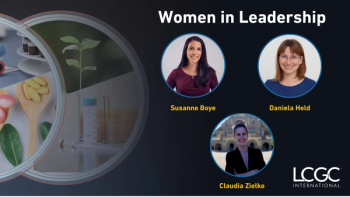Key Points:
- The Grass Roots initiative was created in response to the limited academic instruction in chromatography within UK university chemistry programs. The event offers hands-on, real-world training in chromatography and mass spectrometry, targeting early-career researchers and professionals.
- Held annually, the event blends technical education with outdoor activities and social networking. With a deliberately small group size (<30 participants), attendees benefit from close interaction with experienced trainers and peers.
- Each year’s course evolves to reflect emerging analytical challenges. This year, the focus is on the complex chromatographic and mass spectrometric characterization of therapeutic oligonucleotides, taught by leading experts from academia and industry, with additional input from vendor sponsors offering practical insights and tools.
Now, in its seventh year, the Grass Roots event—organized annually by The Chromatographic Society—continues to offer a unique and immersive educational experience for early-career chromatographers. Paul Ferguson reflects on the origins and evolution of Grass Roots—from its foundation in response to limited academic instruction in chromatography to its current role as a vital training platform for complex and emerging analytical challenges. This year’s course will focus on the chromatographic and mass spectrometric characterization of oligonucleotides.
You are running your 7th Grass Roots event this year. Can you tell us what it is?
The Grass Roots events are educational events organized and run by The Chromatographic Society annually. They are a mixture of teaching, a social program to encourage networking, and walking / outdoor activities, which makes for an enjoyable and diverse weekend. We organize the Grass Roots events for a small number of attendees, typically less than 30, including the trainers, to maximize trainer interactions with delegates. The events have focused on chromatography, either fundamentals, small molecule method development, or biomolecule separations. They include industry-relevant content, so students gain an understanding of how the information they are taught is relevant in the “real world” and how industrial practitioners build their fundamental understanding of their daily chromatography practice. They are also a great opportunity to network and meet people working in areas connected by chromatography.
So, how did the idea of the Grass Roots event originate?
Historically, the Society ran educational courses, with our focus shifting toward 1- or 2-day “topic” meetings in the early 2000s. However, we continued to observe that teaching of chromatography within UK university chemistry degree courses was, and still is, typically very limited (often less than 4 h over a whole 4-year chemistry course), which is difficult to understand as chromatography is the most utilized analytical technique in a huge variety of industries.
To help address this shortcoming, in October 2016, as part of the Society’s Diamond (60th) anniversary celebrations, the Society decided to hold its first Grass Roots event in Grasmere in the Lake District (hence the name was suggested as “Grass” Roots by one of our committee members) at the Wainwright Hotel. The course focused on teaching the fundamentals of liquid chromatography (LC) to graduate students and novice chromatographers from industry. The event hosted over 20 attendees and was such a success that the Society repeated the course in Church Stretton in October 2017, with over 25 delegates from academia and industry attending. As the feedback from both events was very complimentary, we’ve continued to run Grass Roots events every year since.
Where do you hold these?
We originally alternated these events between the Lake District and Church Stretton in Shropshire in the UK. We used these locations because of the hotel facilities available, but also because of the amazing countryside on offer. We identified the University of Cumbria location in Ambleside in 2020, and since then, we’ve held all our events there (bar pandemics!). Being a university, the teaching facilities are excellent, the accommodation is conveniently close, and the catering is around the corner from the lecture rooms. The Lake District is also a world heritage site with stunning scenery, offering another reason for delegates to join us! In August, we maximize the chance of good weather, and some delegates spend a few days in the area afterwards to explore.
Who attends these events?
These events are pitched at PhD students researching or using LC in their research, or industrial colleagues who have been using the technique for only a few years.
Typically, we have delegates join us from the UK, Ireland, Europe, and this year we have our first colleague attending from the US. We are fortunate that several companies generously sponsor students to attend these events, usually a minimum of 6 or 7 students, and the Society also provides Ted Adlard bursaries to assist colleagues from UK SMEs (small and medium-sized enterprise) companies to attend.
These events are essentially run “not-for-profit”, and the costs include accommodation, all meals, and course notes.
Who teaches at these events, and how are they structured?
We have a group of trainers, all from the Society committee. Most of us work in industrial settings and are practitioners in the area being taught. As well as understanding the topic areas, we can provide delegates with relevant insights born from real-life experience. Two of us, Tony Taylor of Element Lab Solutions and I, have taught on every course to date, and Tony can be relied upon to provide a great “icebreaker” social activity on the first evening of the course!
Tell us about what you’ll be teaching this year.
We’re teaching a topic that we’ve not covered before, namely the characterization of oligonucleotides – both small antisense oligonucleotides (ASOs) and small interfering RNAs (siRNAs), and messenger RNA (mRNA). These molecules are currently of great interest in the pharmaceutical industry across many therapeutic areas, and mRNA drugs were at the heart of stemming the COVID pandemic. There is a major use of chromatography, across many modes, to characterize different critical quality attributes associated with these very complex molecules, none of which are trivial to undertake practically. We'll begin with the fundamentals—covering what these molecules are, their naming conventions, and how they're synthesized—before moving into regulatory considerations and an in-depth look at key modes of chromatography and mass spectrometry sequencing. Practical tips will be integrated throughout the lecture program. With the rapid pace of developments in modalities, synthesis, and analytics, it's been a challenge to keep up with the constant stream of new publications as we've been putting our course notes together!
The course will be led by a team of expert trainers: Christina Vanhinsbergh, a specialist in oligonucleotide chromatographic method development and mass spectrometry (MS) characterization at AstraZeneca; Ken Cook, EU Bioseparations Manager at Thermo Fisher Scientific, who brings extensive expertise in modern oligo characterization; Tony Taylor of Element, who offers a vendor-side perspective with broad experience in liquid chromatography; and myself, drawing on my work in oligonucleotide analysis within the pharmaceutical industry.
In addition, this year we’re offering something a little different from previous events. Several of the sponsoring vendors will also be attending the event, offering unique insights into product design, development, and practical applications, along with valuable opportunities for direct interaction.
When is it, and where can people learn more about it?
This year’s event runs from the afternoon of Friday, August 15, to lunchtime on Monday, August 18. As mentioned earlier, the event will be held at the University of Cumbria in Ambleside. The easiest way to get there is to drive (the Lake District is just off the M6), but trains to Windermere run from Manchester airport and many west coast England train stations. Once at Windermere, it’s a short bus ride or taxi along Windermere (the longest lake in the UK) to the venue in Ambleside.
At the time of this interview, we still have a limited number of fully sponsored student bursaries (UK PhD students are eligible for these) and a handful of industrial spaces. More information can be found on our website: www.chromsoc.com/events
Paul Ferguson is a member of The Chromatographic Society and has held several positions on the executive committee, including vice-president, president, and honorary secretary. The Society was established in 1956 as the “gas chromatography discussion group” and is dedicated to “supporting UK chromatographers and chromatography.” The Society typically organizes 3 or 4 events per year, often with other learned societies such as the RSC separation science group. More information on the Society can be found on their website: www.chromsoc.com





